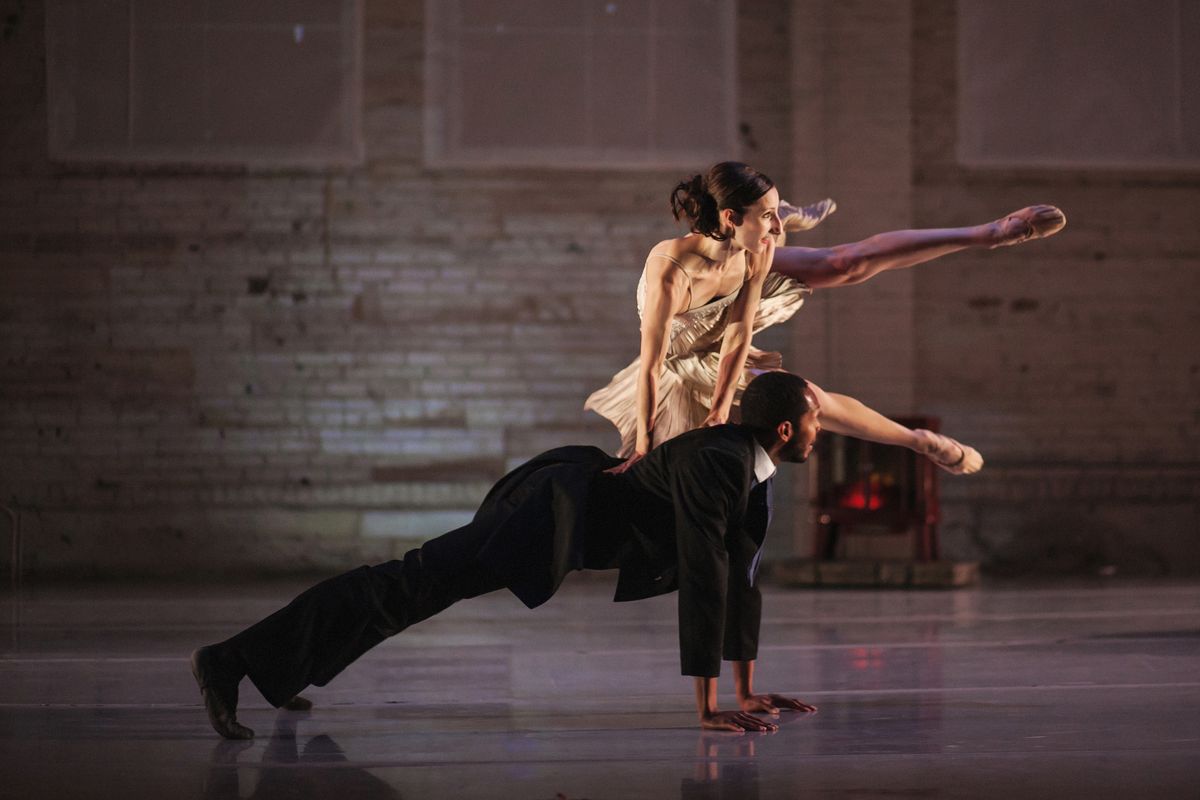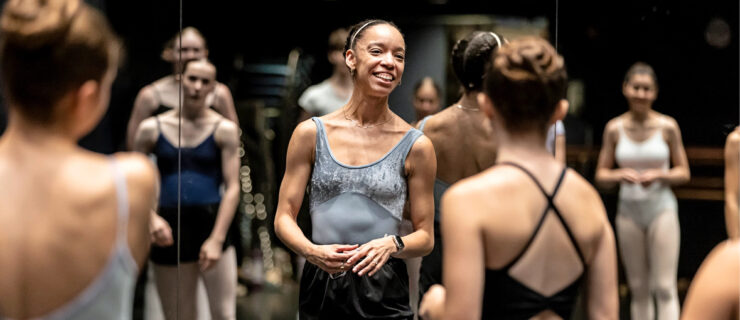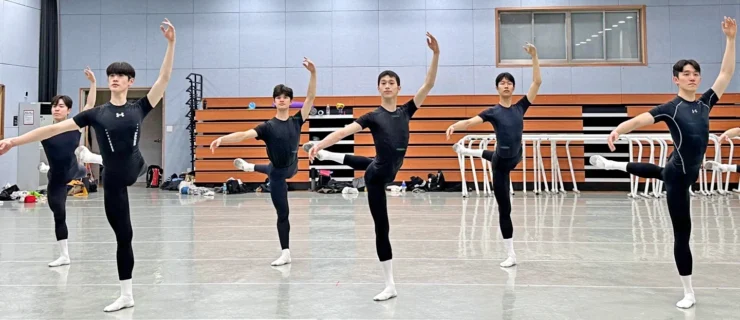Want to Join a Contemporary Ballet Company? Here's What You Should Be Doing Now
This story originally appeared in the June/July 2015 issue of Pointe.
When she was a teenager, Aspen Santa Fe Ballet dancer Seia Rassenti’s training was about as classical as it could get. A full-time bunhead at the Kirov Academy of Ballet in Washington, DC, she was determined to get a solid technical foundation. But she knew in her heart that she wanted to dance contemporary.
Nearly every summer, Rassenti would attend a contemporary ballet program, like Complexions, The Ailey School or Debbie Allen Dance Academy in L.A. “That was my outlet,” she says. “Each program had a different atmosphere, and I met some really cool people who had interests outside of ballet.” Then at summer’s end, she would faithfully return to the classical world and get back to “work.” For Rassenti, her classical training was her means to an end. And it paid off: She earned a contract with Charlotte Ballet’s second company (formerly North Carolina Dance Theatre 2), known for its diverse and innovative repertoire.
The road to a contemporary ballet career isn’t a clear-cut path. And while strong classical technique is vital, nothing sticks out more than a bunhead in pink tights at a contemporary audition. That’s because traditional ballet training does not typically prepare dancers for the contemporary genre’s emphasis on collaborating, questioning, improvising and baring your soul even when it doesn’t feel pretty. So if a ballet dancer knows that this is the world she was made for, what can she do to prepare?
Branch Out
 Josie Walsh’s contemporary class at Joffrey Ballet School’s summer intensive. Photo by Jody Quinby Kasch, Courtesy Joffrey Ballet School.
Josie Walsh’s contemporary class at Joffrey Ballet School’s summer intensive. Photo by Jody Quinby Kasch, Courtesy Joffrey Ballet School.
A classical foundation is essential for contemporary ballet companies, especially those that work on pointe. But classically trained dancers face a specific set of challenges: They have to learn to isolate each body part, pick up detailed choreography quickly and embrace being off-center. “You have to learn to trust your classical technique, to let go of it,” says Rassenti.
“I find that a lot of classically trained dancers lose their natural instincts,” says Josie Walsh, artistic director of Joffrey Ballet School’s Contemporary Ballet Intensive in San Francisco and founder of Ballet RED. “They’re trying to be this classical ideal, and they get very separate from something more organic.”
Walsh recommends supplementing your training with a variety of classes, like modern, jazz and even hip hop to practice freer styles of movement and learn how to pick up small details quickly. Dawn Fay, producing director of Wonderbound in Denver, Colorado, also recommends hip hop, explaining its benefits on a basic anatomical level: Whereas classical ballet tends to be smoother and utilizes “slow twitch” muscle fibers, hip hop involves sudden movements, which require finely tuned “quick twitch” muscle fibers.
Christine Cox, artistic and executive director of BalletX in Philadelphia, also recommends recreational classes like Zumba, or if you’re old enough, going to a dance club to find your innate rhythm and let go of trying to fit a mold. “It’s really important that dancers can move every part of their bodies in a new and different way,” she says.
A New Mindset
 Aspen Santa Fe’s Seia Rassenti (right) in Beautiful Mistake. Photo by Rosalie O’Connor, Courtesy Aspen Santa Fe Ballet.
Aspen Santa Fe’s Seia Rassenti (right) in Beautiful Mistake. Photo by Rosalie O’Connor, Courtesy Aspen Santa Fe Ballet.
Contemporary teachers often talk about finding “honesty” in choreography. But what does that mean? At its most basic, “honesty” refers to embracing (and revealing) your unprotected, vulnerable humanity, as well as letting your own voice shine through the choreography. “A lot of contemporary choreographers look to their dancers for ideas and want them to be a part of the process,” says Cox.
But first, you must find your voice. Improvisation classes are one of the best ways to prepare. “It’s a craft,” says Walsh. “It’s something that you have to do every day and get used to.” Any style of improvisation is beneficial, but Karah Abiog, program director for Alonzo King LINES Ballet Training Program, notes that Gaga is currently one of the most popular styles used for exploration.
It’s also important to gain experience with the creation process to practice adapting to different choreographers’ styles and learn how to pick up new material quickly. For Walsh, this is one of the most important qualities a dancer can possess: “When I’m choreographing, I would rather work with a dancer who is less talented but who can remember my choreography, than a more talented dancer who can’t remember, so that I can keep moving quickly and follow through the line of inspiration.”
Finding Balance
 “Contemporary choreographers look to their dancer for ideas and want them to be a part of the process.” –Christine Cox. BalletX’s Andrea Yorita in Malasangre. Photo by Alexander Iziliaev, Courtesy BalletX.
“Contemporary choreographers look to their dancer for ideas and want them to be a part of the process.” –Christine Cox. BalletX’s Andrea Yorita in Malasangre. Photo by Alexander Iziliaev, Courtesy BalletX.
It might seem like aspiring contemporary dancers have to work double duty, logging both classical and exploratory training hours each week. “It doesn’t necessarily mean doubling your hours,” says Abiog. “It’s doubling your conscious way of working, your mindset.”
To do this, Cox suggests finding a training equation that works for you, and keeping it consistent. For instance, devoting 75 percent of your week to ballet, and 25 percent to other styles such as jazz, modern technique or improvisation.
Regardless, Cox recommends connecting with your classical base every day. Fay, Abiog and Walsh agree: While thorough classical training might not be required in all contemporary dance, impeccable classical technique is non-negotiable to join a contemporary ballet company. Cleanliness and purity of line are difficult to instill in the body otherwise.
Strategizing Your Career
 Ressenti in Aspen Santa Fe Ballet’s Square None. Photo by Rosalie O’Connor, Courtesy Aspen Santa Fe Ballet.
Ressenti in Aspen Santa Fe Ballet’s Square None. Photo by Rosalie O’Connor, Courtesy Aspen Santa Fe Ballet.
Because “contemporary dance” is such a broad term, the first step towards approaching a career is to identify choreographers that you admire. Begin by researching online and going to performances, then by attending workshops, intensives or master classes hosted by your favorite companies and choreographers. Because they’re all so different, it’s important to know what you’re getting into before you make a commitment.
Networking is key. Contemporary companies tend to be small, with dancers participating in the creation process, so most directors want to get to know you on a personal level before offering a contract. When Walsh needs a new dancer quickly, for instance, the last thing she wants to do is organize a large audition. “I’ll think, I really like that girl who came to my program in San Francisco,” she says. “Taking you into a company is like taking you into a family. You’re with these people every day.”
Most importantly, think about your career goals: For example, would you prefer a repertoire that offers both classical and contemporary works, or one that’s strictly contemporary? Do you want to work with one choreographer or many? Would you prefer a company that works on pointe, or are you comfortable dancing mostly in socks?
For Rassenti, the mixed repertoire at Charlotte Ballet was a comfortable transition. But by the time she joined Aspen Santa Fe Ballet, she was ready to jump into contemporary full-time—and she hasn’t looked back. “In this company, we create a lot of new works,” she says. “I know that there is a part of my soul in every piece.”





